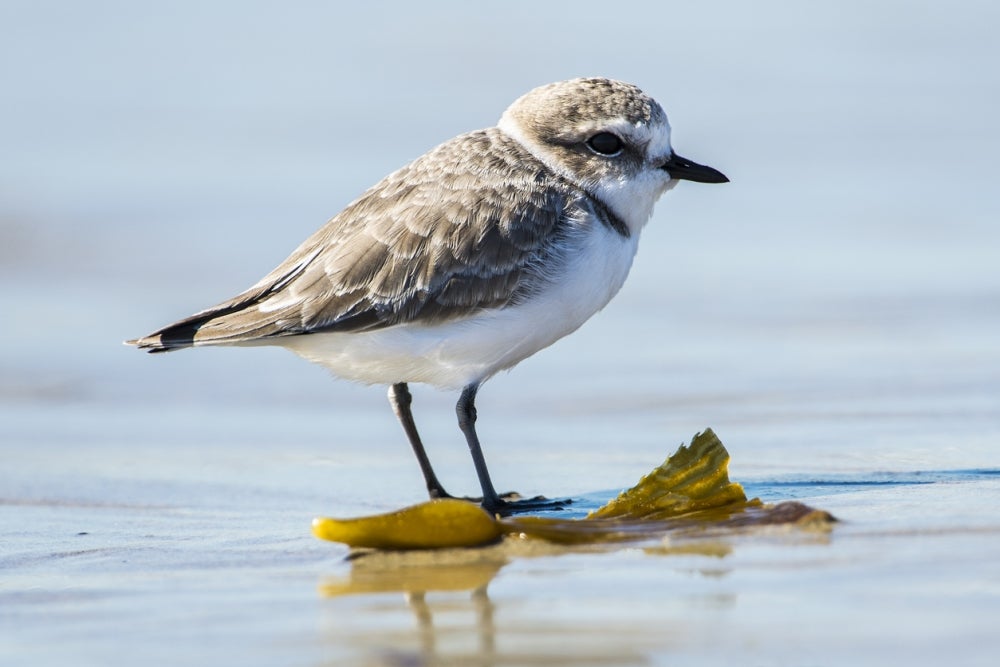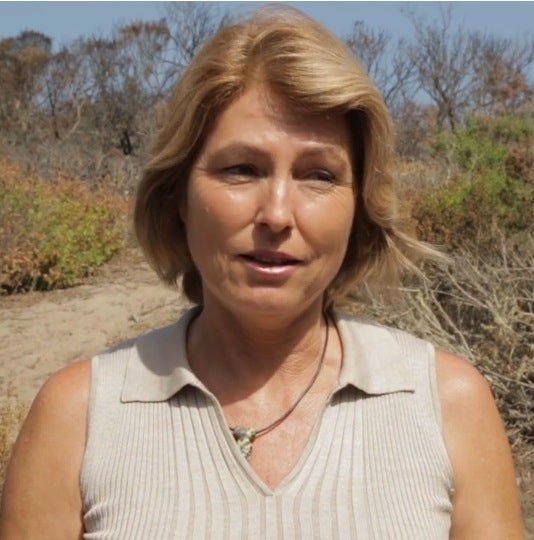
20 Years of Snowy Plovers

They’re tiny, fluffy and almost perfectly camouflaged against the sand dunes of the upper beach at UC Santa Barbara’s Coal Oil Point Reserve (COPR). But for all their diminutive size and near invisibility, Western snowy plovers have staged a spectacular comeback, once again nesting in habitat they had been driven from. It’s a triumph of human cooperation with wildlife, marked by decades spent protecting the tiny shorebirds at the reserve, whose populations were nearing extinction not too long ago.
“We want to share the excitement we have about being part of this successful program for the last 20 years,” said COPR Director Cristina Sandoval. “The last 20 years also gives me hope that culture can change for the better and people can change their habits if they are given an opportunity to appreciate the beauty and importance of another species.”
The birds are part of a population that ranges along the West Coast, from southern Washington State to Baja California. They are considered a ‘threatened’ species by the U.S. Fish and Wildlife Service, with populations losing their upper sandy beach habitats to disturbances such as encroaching urbanization and beach grooming.
The current situation is a welcome change from the more dire conditions of 2000, around the time Sandoval took the helm at Coal Oil Point Reserve, a collection of protected habitats on the coast between Isla Vista and Goleta, a few miles west of the UCSB campus, and part of the University of California Natural Reserve System. By that time, she said, it had been 40 years since the last nest had been observed at COPR and its Sands Beach. With more foot traffic and other disturbances in the dunes where the birds nest, the place had become unsafe and as a result, the plovers were avoiding the area for nesting.
“Sometimes birders would count 100 plovers in the early morning, and they would all be gone from Sands Beach by afternoon,” Sandoval said. “In their place, the beach would be full of beach towels, dogs, parties and even an occasional car.”
It was from those kinds of conversations with nature-loving locals that the idea of a plover protection program was born, an ambitious project with the goal of having the birds nesting again on the beaches, with minimal disturbance.
“A threatened species leaving COPR because of too much disturbance meant the reserve was not doing its job,” Sandoval said. “And if there is any place wildlife should feel safe, it is in an ecological reserve.”
With the guidance of the U.S. Fish and Wildlife Service, COPR began decades of education and awareness-building on behalf of the snowy plovers. Docents and interns stationed themselves at strategic points on the sand to protect the birds and their sensitive habitat, and to encourage conversations about their conservation efforts. COPR staff put up educational signage asking people to share the beach with the birds, and they also helped to care for abandoned eggs and chicks. Sandoval, too, would take every opportunity to educate the public, regularly turning up at public meetings to urge people to keep their dogs on leashes on those beaches, or to explain why Fourth of July fireworks were generally not a good idea.
“Our first goal was to manage people, not plovers,” she said. “We wanted to teach people to share the beach with plovers, and create a win-win management plan that allowed for the plovers to live in peace and the people to recreate.”
They didn’t have to wait long for the first of the wins. In 2001 her birder friend and Santa Barbara Audubon member, Adrian O’Loghlen, spotted a chick in the dunes at Sands Beach, the first in decades.
“My husband and some friends dropped everything to watch this chick all daylight hours while I tried to get volunteers to help,” Sandoval recalled. “We knew that if this chick survived, we could re-establish a breeding population at COPR.”
Not only have the birds met the conservationists’ hopes, they’ve surpassed them. Today, Coal Oil Point Reserve hosts hundreds of plovers during their seasonal winter aggregation and averages 30 fledged chicks per year.
“We were also surprised by how many plover pairs decided to nest at Sands Beach,” Sandoval said. She credits the flourishing plover population to the kelp beds that lie just offshore — the kelp wrack that washes up on the sand draws hordes of invertebrates that become food for the birds. “For a beach that is only a mile long, we have a large breeding population, maybe the highest density along the Pacific Coast.”
Managing both birds and people is a job that will never end, Sandoval said, though having the plovers successfully breeding again is proof that conflicts between wildlife and humans can be solved. It’s an important idea to hang on to, especially as increasing human population density continues to push the boundaries between urban and wild spaces.
Add to that new challenges such as sea level rise, a disturbing preview of which Sandoval got in the summer of 2019, when unusually large waves at high tide inundated the plover nesting area. She rushed to the scene before the ocean could claim all the flooded nests.
Fortunately the Santa Barbara Zoo was ready to help. The zoo had for several years been participating in a regional snowy plover conservation effort with COPR playing a key role, and they took in the 14 tiny eggs Sandoval managed to rescue, hatching and rearing them in their incubation room and flight pen. While the new facilities saw no use during 2020 due to the pandemic, the place roared back to life in 2021, releasing by mid-year “almost as many plovers as were released in the entire season of 2019,” according to the zoo. The most recent of these releases took place in late September, with nine plovers let out on the beach from pet carriers.
Moving the chick hatching and rearing duties to the Santa Barbara Zoo allows COPR to focus more on other aspects of its snowy plover program, such as outreach, research and education. The program, managed by Jessica Nielsen, offers about 50 paid internships per year to train undergraduate students in conservation, with support from the UCSB Coastal Fund.
“We want to increase and enhance this training program and improve student diversity in the area,” said Sandoval, her sights already set on the decades ahead.
“We have to always be looking 50 years ahead,” she said. “These days, conservation is not only about protecting habitat; it is also about creating resilience to a changing world.”



